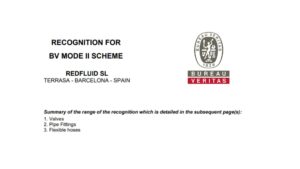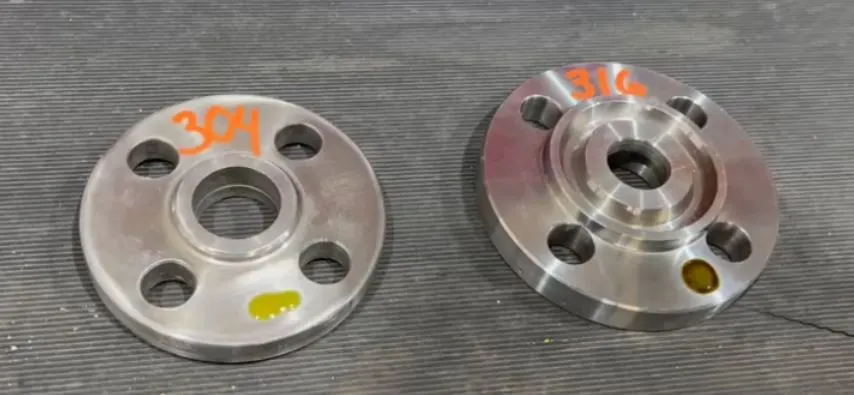
Redfluid obtains BV Mode II recognition from Bureau Veritas
It’s official! Redfluid has been recognized by Bureau Veritas under the BV Mode II scheme — or as we call it in the industry, Company
A looot of people believe the stainless steel they have in their factories is 316, but they soon realize their materials are not that resistant to corrosion, and they start to wonder if they actually got what they ordered—or if they were sold something completely different.
At first, the same thing happened to us when we bought raw materials, until we decided to invest in a spectrometer to verify the material and offer a proper quality control service to our customers.
Buuuut, we understand that not everyone is planning to buy such an expensive lab device. That’s why at Redfluid, we offer the ultimate (and affordable) kit to easily tell the difference between 304 and 316 stainless steel.
Here’s a video below showing a simple homemade experiment using this kit.
It’s super simple — grab your notepad and pen, or Word and keyboard if you’re a millennial.
All you need to do is shake the product (with the cap on — very important detail).
and then apply 1 or 2 drops onto the selected material to check.
We recommend writing down somewhere on the material the grade you think it is, so you can confirm whether it matches or not.
Once you’ve applied the product, you’ll need to wait around 15-20 minutes for the reaction to take effect — and then you’ll see the results:
If the product stays the same color or turns whitish, that means the material is 304 stainless steel.
On the other hand, if the product turns brown, that means the material is 316 stainless steel.
There are only a few differences between 304 and 316 stainless steel, buuut there’s one key difference in their chemical composition.
That’s where the famous Molybdenum (Mo) comes into play. This element is present in 316 stainless steel, but not in 304.
And you might be thinking: “Very interesting, Kike, but what does this have to do with the kit?”
Well, it has everything to do with it. The kit’s job is to detect whether there’s molybdenum in the material’s chemical composition or not.
If molybdenum is present, the product reacts and turns brown on the surface — meaning it’s 316.
On the other hand, if there’s no molybdenum, there’s no reaction, and the product stays the same color (or slightly whitish), indicating it’s 304.

If you want a little gift with more info, click here (product datasheet).
In short, if you’re unsure whether your fitting, equipment, or valve is made of 304 or 316 stainless steel, the best option — if you don’t want to overspend — is this detection kit.
And remember, if you need anything related to valves, fittings, or high-pressure systems, just reach out to me!
Share this post

It’s official! Redfluid has been recognized by Bureau Veritas under the BV Mode II scheme — or as we call it in the industry, Company

With this there is always a huge hassle. But well, that’s what we are here for. Let me explain a little bit the difference between